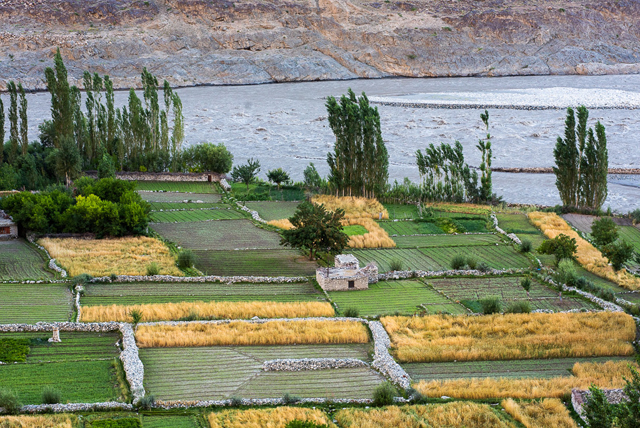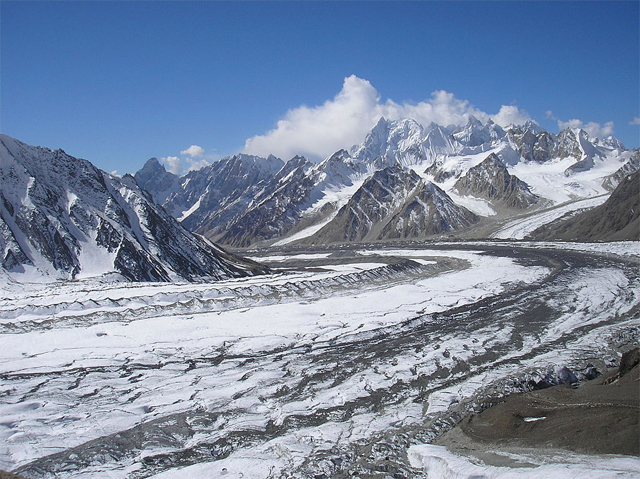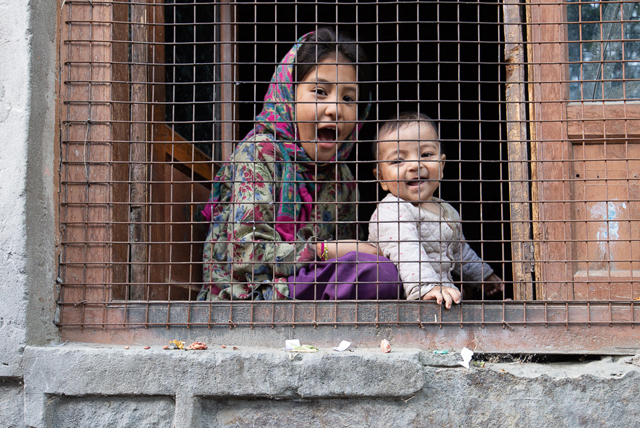The Siachen River has been acting very strangely over the past 20 years, threatening the 28 villages in the Nubra Valley of Ladakh that it flows through. The cause of its erratic behavior is global climate change. According to an article in Al Jazeera last week, the rapid melting of the Siachen Glacier is causing higher than normal and very erratic river conditions, which threaten the lives of thousands of people living in the valley below. Out of the 28 villages in the valley, 23 are on the river banks.

Nordan Otzer, Director of the Ladakh Ecological Development and Environmental Group, told Al Jazeera that over 20,000 Ladakhi living in 20 riverside communities are threatened by the river flooding their buildings and destroying their fields. Half of those villages are “at extreme risk” of severe flooding. The Shyok River, which also drains the Siachen Glacier, is part of the Nubra Valley river system.
Zangpo, a resident of Kuri, a village in the valley, told the reporter that the river, which is also called the Nubra River, has become unpredictable. He complained that the river grows wilder in the summer, washing away their cattle. If they move their animals to higher pastures, they are killed by the snow leopards. Another villager in Kuri said that 10 years ago they had around 300 cattle, but now they only have 130.

One of the theories held by locals is that the erratic behavior of the river is caused by the fact that the Indian Army has campsites on the glacier itself, which is strategically located at the end of the Line of Control with Pakistan and has been contested by the armies of both countries for more than 30 years. Experts disagree: the problems with the river, the variations in the flow of water, are basically caused by the warming temperatures. Sudden cloudbursts increase the variations in the flows of river water.
At Kuri, engineers designed and built a stone wall in 2014 in an attempt to protect the village from river floods, but one engineer expressed the opinion that it will not help much longer—the river will soon breach the wall. He added that it would be helpful if they could dredge the river bottom near the village by at least six feet so more water could flow past, but that would be an expensive proposition.

Tsering Jorgay, a 40-year old man from Kuri, said that the changing patterns of the river are not their only concern. The village is not getting as much snowfall as it used to. When he was a kid, he was able to snowshoe to school on homemade wooden planks that were nailed to plastic pipes. His kids today don’t have enough snowfall to even dream about such things.
A farmer from the nearby village of Murgi told Al Jazeera that snow falling after January is unstable, as it does not have enough time to freeze and become packed. He expressed the worries of the villagers that, because of the unstable snow above them in the mountains, they will be more susceptible to avalanches than they were in the past. Lotus Sonam, Director of the India Meteorological Department in Srinagar, agreed. He said he is working on ways to better predict avalanches and flash floods.
The Al Jazeera article mentioned the freak storms of August 2010, cloudbursts that produced 350 mm of rain in only two days. The destruction caused by the floods in Leh and surrounding communities that year was unprecedented. But the conclusion? There is really no effective way to deal with the problem and the government does not have a workable plan. So there is no foreseeable way to end the erratic flows of rivers such as the Siachen, which define the way of life for the rural Ladakhi people.